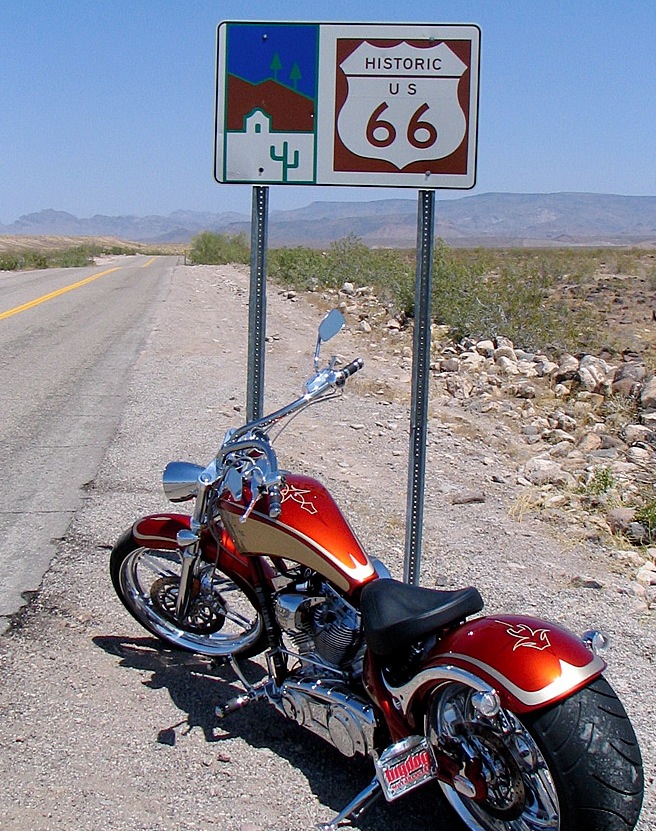
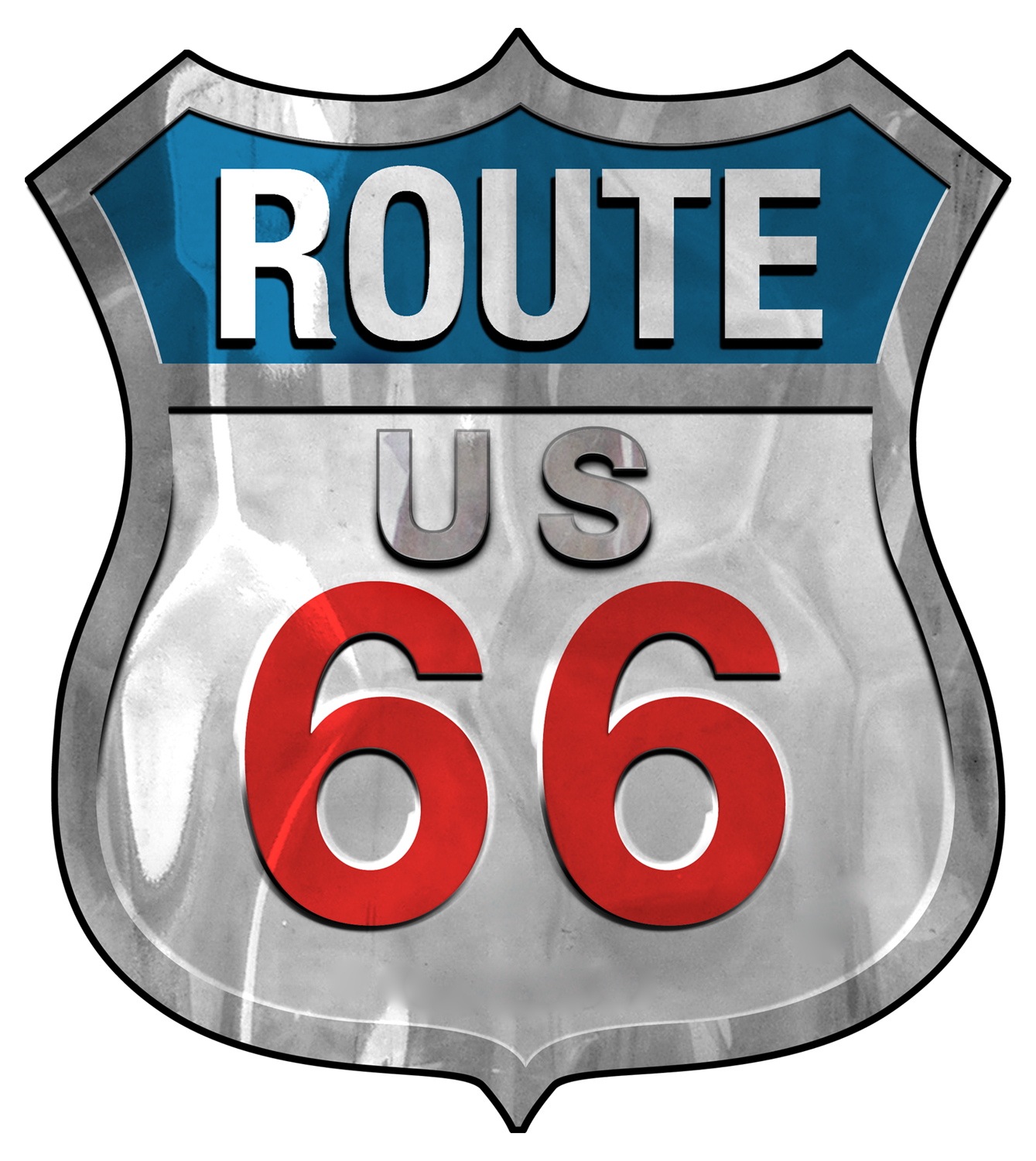
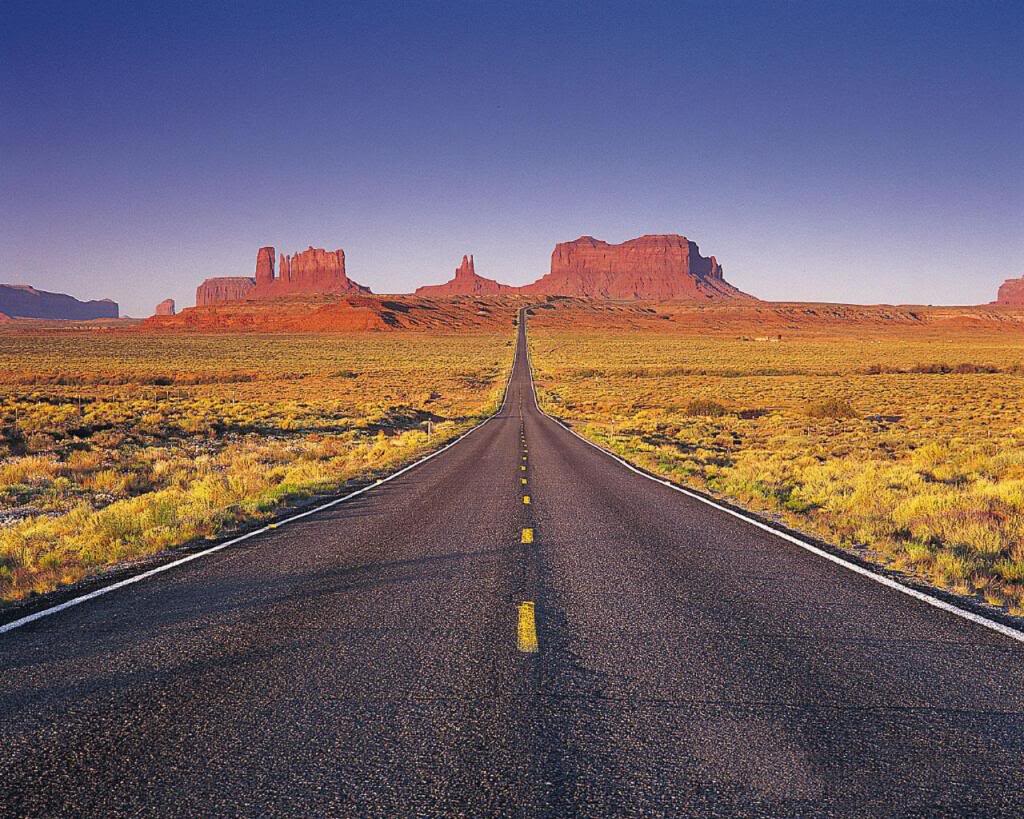
| Historical Sites | National Parks |
 |
 |
 |
| Lodging | Restaurants | Attractions | Driving The Road |
| A 21st Century trip along Route 66 is basically a celebration of America's 20th Century love affair with the automobile and the car culture it inspired. Route 66 was the first major East West highway. It began at Lake Michigan and ended at the Pacific Ocean. In between, it rolled past corn fields, the Mississippi River, big cities (Chicago, St. Louis, Tulsa, Oklahoma City, Los Angeles), tiny towns (Pawpaw, Mud Flats, Sombrero, Radiator Springs, Tucumcari), open prairie, snow covered mountains, the Painted Desert, five Indian Reservations, four national parks, and eight states. It was used by the Okies and Arkies fleeing the Dust Bowl, by U. S. military caravans hauling equipment and men during World War II, by workers moving West to California, by families heading on vacation to the Grand Canyon and The Real West, and by hopeful singers and actors hoping to strike it rich in Hollywood. It was the road of Hope, of Rebirth, of New Beginnings. | 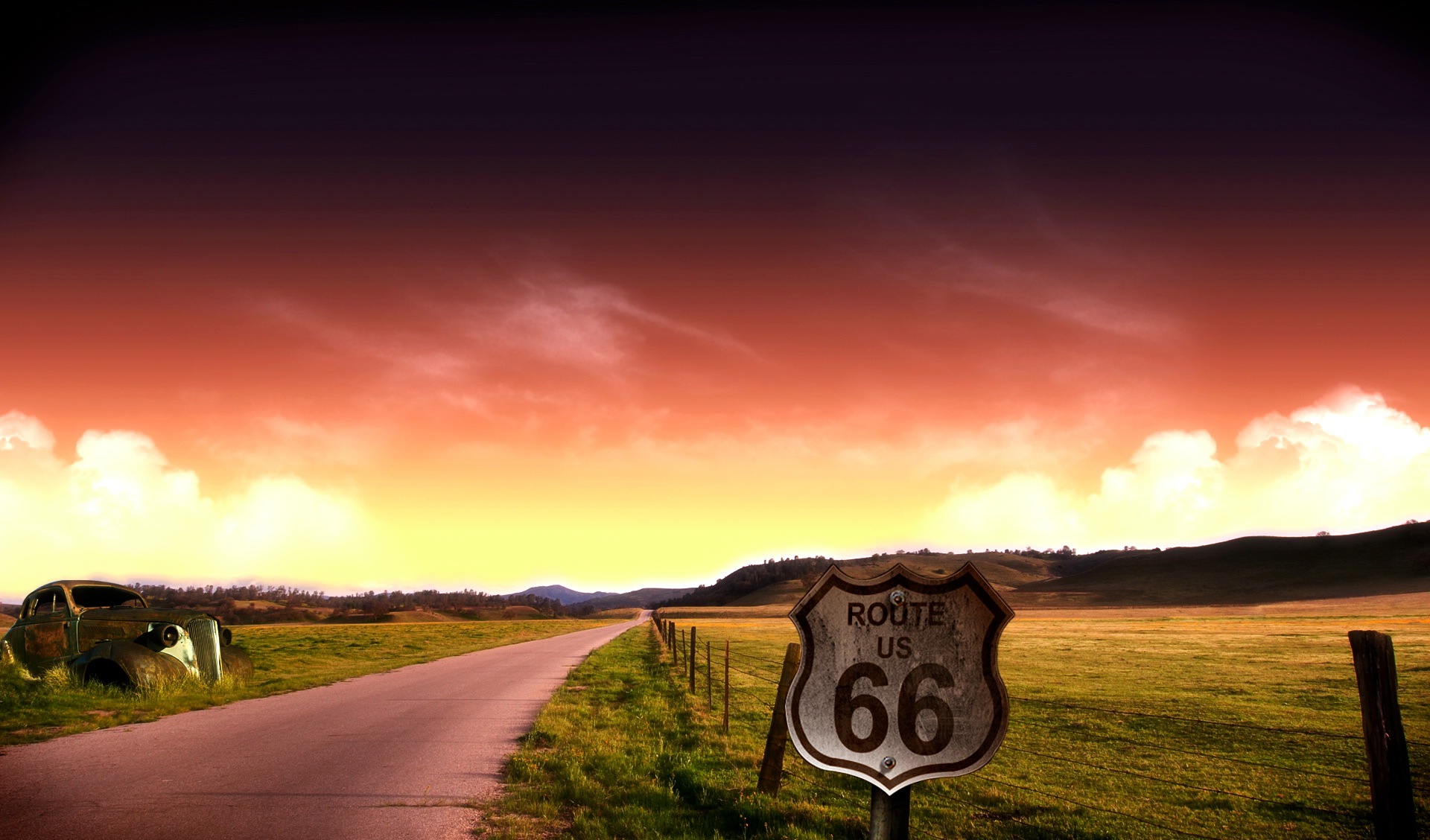 |
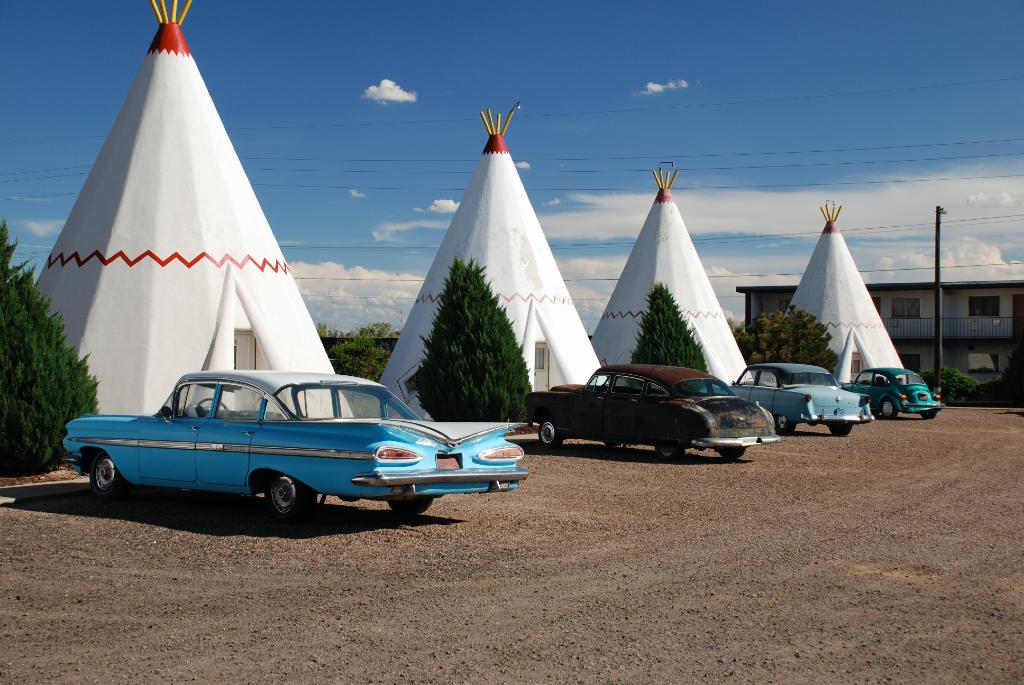 |
All this traffic created a demand for gas, overnight accomodations and meals. People opened motor courts, restaurants, gas stations and groceries. The early motor courts consisted of separate cabins, and sometimes took on unique forms, like the famous Wigwam at Holbrook, Arizona (left). They evolved into duplexes, then strip motels, and finally the elaborate motels we have today. Most of the earliest ones are long gone, but some of the 1940s and 1950s motels remain. They've been lovingly preserved or restored and now find themselves tourist attractions, as Route 66 lovers seek them out for nostalgic overnights on the way West. The neon signs and roof liner lights are highly valued. There's one group which specializes in restoring and preserving these lights. The Route 66 Association maintains a directory of classic motels and their conditions, updating the listings yearly to indicate the ones operating in good shape, operating but deteriorating, closed, for sale, in danger, and in a state of collapse. |
| Then there are the classic 40s and 50s era restaurants. Shown at right here is The Super Dawg, which fans across the country insist serves the best hot dog ever made. It's been run by the same family since 1948. There are a dozen of the originals still out there, all considered Must Stops on cross country trips. They serve classic 50s foods : Hot Roast Beef Sandwiches, Burgers, Fries, Milkshakes (made with real ice cream while you watch), Homemade Pies, Macaroni & Cheese, Country Fried Steaks, Meat Loaf, Stuffed Peppers and Fried Chicken. For breakfast these places whip up great Pancakes, Eggs & Bacon, Omelettes, and of course Coffee. The owners and managers of these places often achieve their own sort of fame. Dawn Welch of The Rock Cafe inspired the character Sally and Fran Houser of The Midpoint Cafe inspired Flo in the movie Cars. Route 66 restaurants get filmed for shows on The Food Channel, The Travel Channel and The History Channel. | 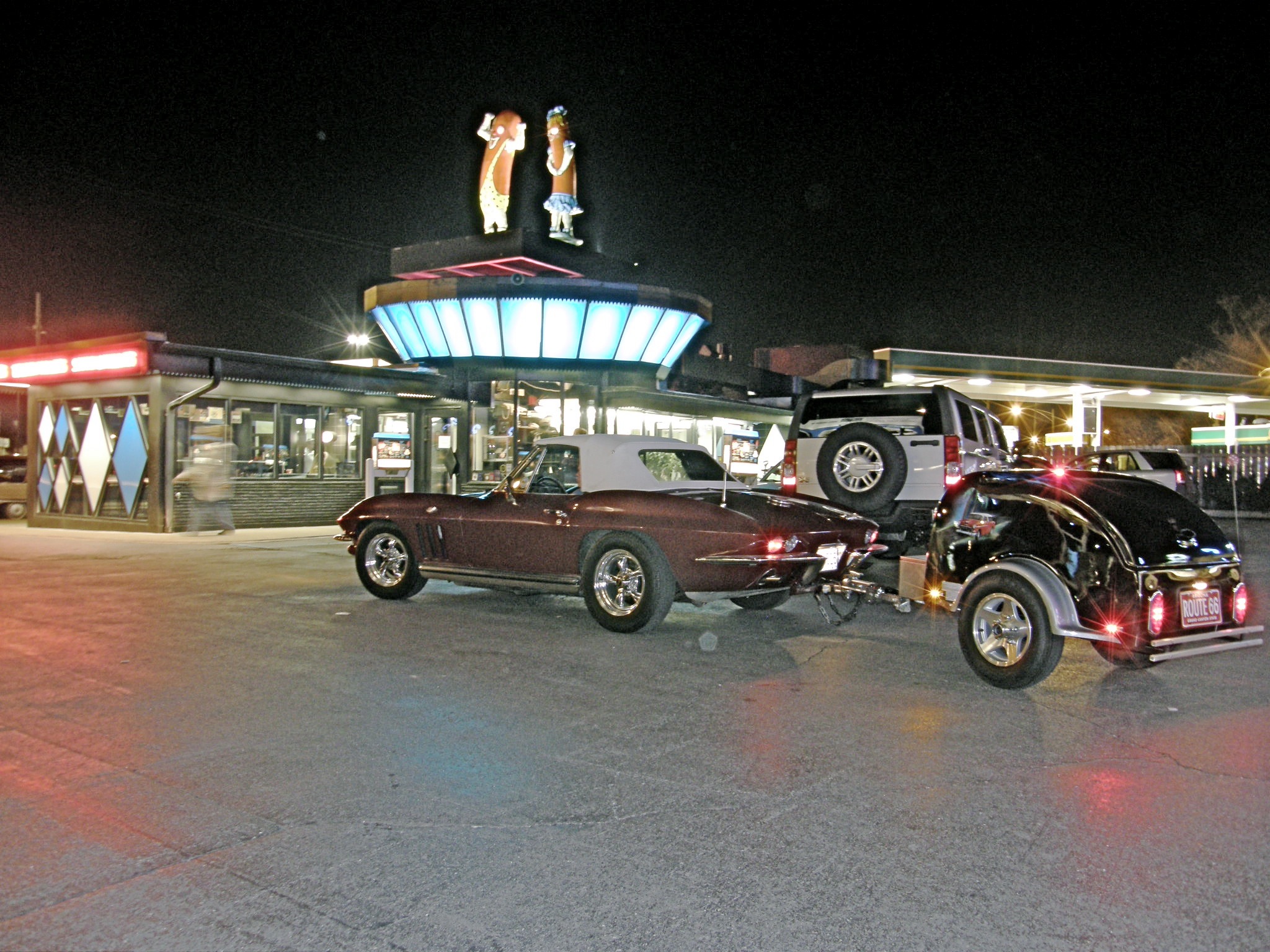 |
|
The old gas stations are also beloved by Route 66 fans. They patronize the ones still operating, like the one here at left. The ones abandoned are sought out and photographed. There's one group which specializes in restoring and preserving the old pumps, and another group which fights to keep empty stations intact until new owners can be found. |
| Some fascinating tourist attractions evolved along Route 66, many of which are still there. There were reptile gardens, haunted houses, souvenir shops and Old West displays. But The Giant Blue Whale, The Cadillac Ranch (shown at right), Meramec Caverns, The Cowboy Museum, the old gold mining town of Oatman, the Jack Rabbit Trading Post, and The Will Rogers Center remain popular still. They've been joined by four Route 66 Museums. And there are the natural or historic attractions of Meteor Crater, Petrified Forest, the Painted Desert, Hubbell Trading Post and the Continental Divide. |
|
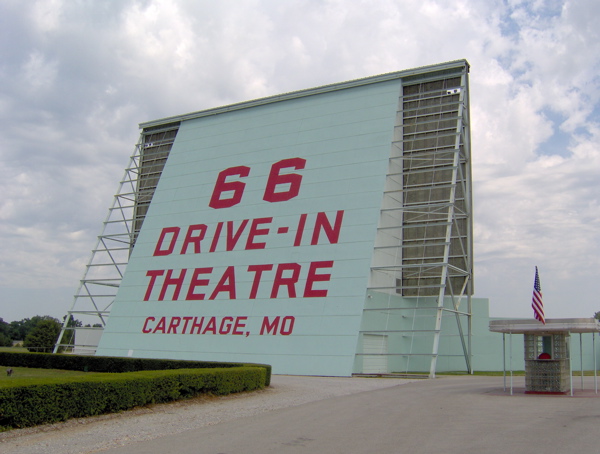 |
Route 66 was like The Oregon Trail in that millions of Americans over half a century followed the road to pursue their dreams. So it is fitting that these same people refused to let the road die. Once the federal government built the interstate highway system, the old highways were basically obsolete. So they decommissioned those roads. The Route 66 signs were taken down and it was removed from roadmaps. Then the backlash began. Route 66 Clubs were founded in the states it passed through. They put the signs back up, staged annual trips along the road, wrote books, and fought to keep the old businesses alive. They pressured Congress to declare the road a national linear park like The Blue Ridge Parkway and The Natchez Parkway. Today there are Route 66 Clubs in Canada, Japan and every European country. Every year groups fly into Chicago, spend two weeks driving the road in vintage cars, motorcycles or vans, then fly home from Los Angeles. Some of the old road was either paved over or made part of I-40, but long stretches of it can still be driven in Oklahoma and Arizona and shorter segments are intact in Illinois, Missouri, New Mexico and California. |
|
|||
|